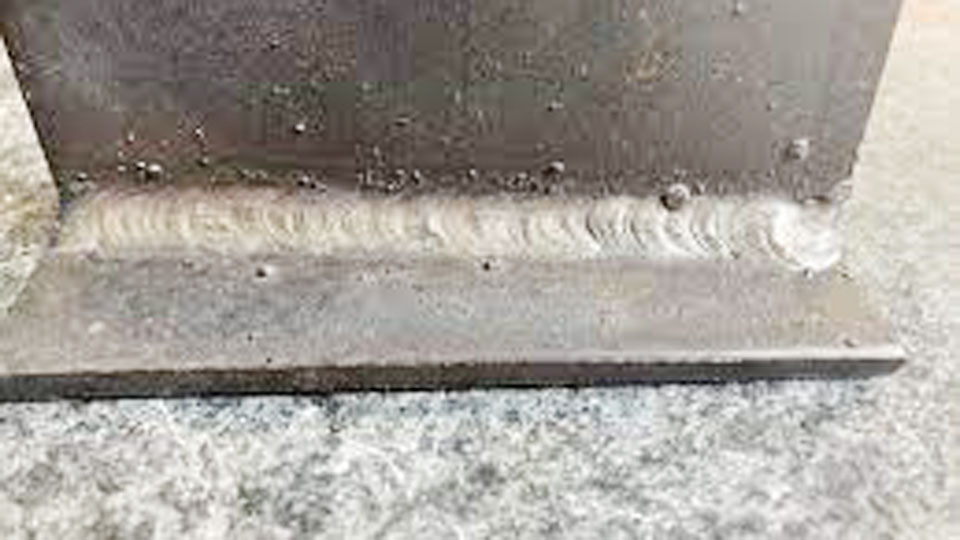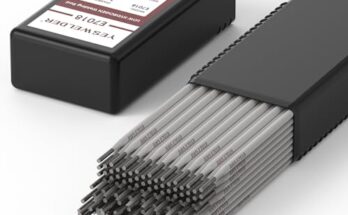MIG welding is one of the most popular welding methods because it’s fast, efficient, and relatively easy to learn. But even though it’s a great process, it doesn’t come without its challenges. If you’ve ever dealt with spatter, weak welds, or porosity, you know how frustrating these problems can be.

Image by reddit
I’ve spent a lot of time troubleshooting MIG welding issues, and I can tell you that most of them have simple fixes. If you’re a beginner or an experienced welder, knowing how to identify and solve common MIG welding problems can save you time, money, and frustration.
I’ll go over the most common MIG welding problems and their solutions so you can improve your welds and avoid costly mistakes.
Poor Penetration
Poor penetration happens when the weld doesn’t fuse properly with the base metal, leading to a weak joint. This usually occurs because of low heat settings, incorrect travel speed, or improper electrode positioning.
Solution
- Increase voltage and wire feed speed – If the weld is just sitting on top of the metal, turn up the heat so the arc penetrates deeper.
- Slow down your travel speed – Moving too fast can prevent the weld from sinking into the metal.
- Keep a proper stick-out length – Maintain about ⅜ inch of wire stick-out to keep a stable arc.
- Use the correct shielding gas – For mild steel, 75% Argon / 25% CO₂ is a good choice for deeper penetration.
Excessive Spatter
Spatter is those tiny metal droplets that fly off and stick to your workpiece. It’s annoying, messy, and can make cleanup a pain. Spatter happens when voltage, amperage, or gas flow aren’t set correctly.
Solution
- Adjust voltage and wire speed – High voltage or wire speed can cause spatter. Fine-tune the settings to reduce excess splatter.
- Use a clean work surface – Dirt, rust, and oil can create spatter. Always clean your metal before welding.
- Check gas flow rate – A 20–25 CFH gas flow rate is ideal. Too much gas can disturb the arc and create spatter.
- Use anti-spatter spray – Spraying your nozzle and workpiece with anti-spatter spray prevents buildup.
Porosity
Porosity is when tiny gas bubbles get trapped inside the weld, making it weak and full of holes. It usually happens because of contamination, moisture, or shielding gas problems.
Solution
- Ensure proper gas coverage – Make sure you’re using enough shielding gas and that there’s no wind blowing it away.
- Clean the metal – Remove rust, grease, and moisture before welding.
- Check for leaks in gas hoses – A leak in the gas line can cause porosity. Inspect your equipment regularly.
- Use the correct torch angle – Keep the torch at a 10–15 degree angle and stay close to the workpiece.
Lack of Fusion
Lack of fusion happens when the weld doesn’t bond properly with the base metal or between passes in multi-pass welds. This is usually caused by low heat settings or incorrect technique.
Solution
- Increase voltage and amperage – More heat helps the weld penetrate and bond properly.
- Use the correct travel speed – If you move too fast, the weld won’t fuse properly.
- Check electrode positioning – Make sure the arc is directed at the joint and not just the filler metal.
Weld Cracks
Cracking in a weld is a serious problem because it weakens the joint and can lead to failure. Cracks can be caused by rapid cooling, contamination, or improper welding technique.
Solution
- Preheat thick metals – This prevents the weld from cooling too quickly.
- Use proper welding technique – Avoid excessive weaving and maintain steady movement.
- Ensure clean metal surfaces – Contamination can cause cracks, so clean the metal before welding.
- Select the right filler wire – Some materials require special filler metals to prevent cracking.
Wire Feeding Issues
If the welding wire doesn’t feed smoothly, it can cause inconsistent welds and make the job frustrating. Wire feeding issues are usually caused by tension problems, liner issues, or incorrect roller settings.
Solution
- Check drive roll tension – Too much tension can crush the wire, while too little can cause slippage. Adjust until it feeds smoothly.
- Use the correct drive rolls – Knurled rolls work better for flux-core wire, while smooth rolls are best for solid wire.
- Inspect the wire liner – A worn-out or kinked liner can disrupt wire feeding. Replace it if necessary.
Inconsistent Arc
An unstable arc can cause poor-quality welds and make it hard to control the bead. This can happen due to dirty contact tips, incorrect gas settings, or poor ground connections.
Solution
- Check the ground clamp – A loose or dirty ground connection can cause arc instability.
- Replace worn contact tips – A damaged tip affects wire feeding, leading to an erratic arc.
- Adjust gas flow – Too much or too little gas flow can affect arc stability. Keep it at the recommended range.
Common MIG Welding Problems and Solutions
| Problem | Cause | Solution |
|---|---|---|
| Poor penetration | Low heat settings, fast travel speed | Increase voltage, slow down |
| Excessive spatter | High voltage, dirty metal, too much gas | Adjust settings, clean surface |
| Porosity | Contamination, gas leaks, moisture | Clean metal, check gas flow |
| Lack of fusion | Low voltage, incorrect technique | Increase heat, improve positioning |
| Weld cracks | Rapid cooling, contamination, wrong filler | Preheat, clean surface, use correct filler |
| Wire feeding issues | Incorrect roller tension, bad liner | Adjust tension, replace liner |
| Inconsistent arc | Bad ground, dirty tip, wrong gas flow | Check connections, replace tip, adjust gas |
Conclusion
MIG welding is a great process, but like any skill, it takes time and practice to master. The key to avoiding common problems is understanding what causes them and knowing how to fix them.
If you find yourself struggling with penetration, porosity, spatter, or wire feed issues, don’t get discouraged. Every welder faces these problems at some point, and the solutions are often simple.
Take the time to adjust your settings, clean your workpiece, and inspect your equipment before starting a weld. Small changes can make a big difference in the quality of your work.
Now that you know the most common MIG welding problems and how to fix them, you’ll be able to weld with confidence and produce strong, clean welds every time.
FAQs
Why is my MIG weld full of holes?
That’s porosity, and it’s usually caused by contamination, gas flow issues, or moisture in the metal.
How do I stop spatter when MIG welding?
Adjust your voltage and wire speed, clean the metal, and use anti-spatter spray.
Why is my MIG wire burning back into the tip?
This happens when the wire speed is too low or the voltage is too high. Try adjusting your settings.
What is the best gas for MIG welding?
For mild steel, use 75% Argon / 25% CO₂. For aluminum, use 100% Argon.
How do I fix a weak MIG weld?
Increase your voltage and amperage, slow down your travel speed, and ensure proper gas shielding.
